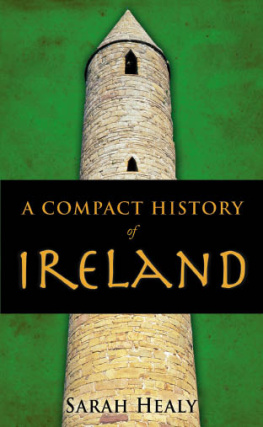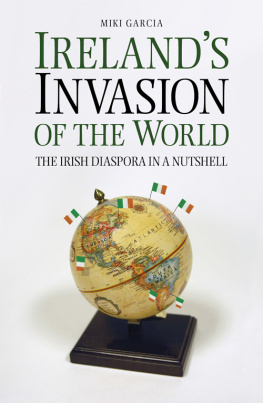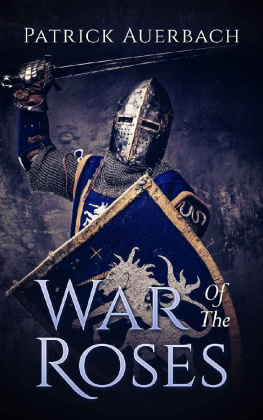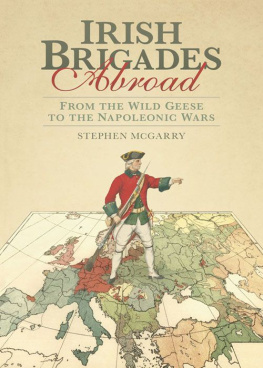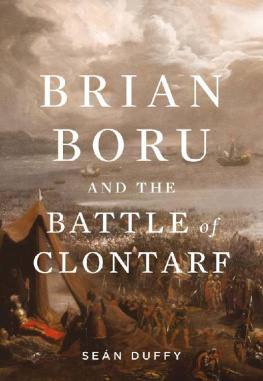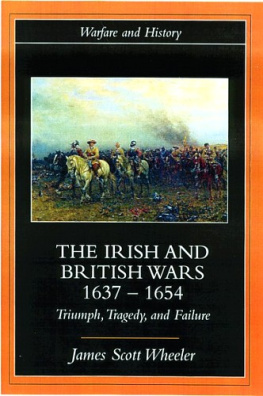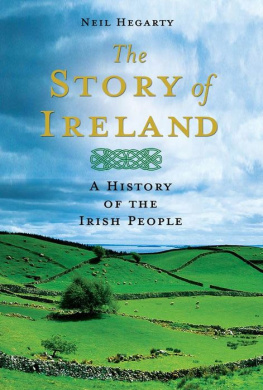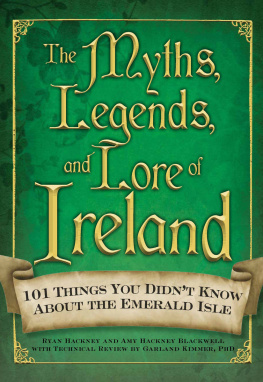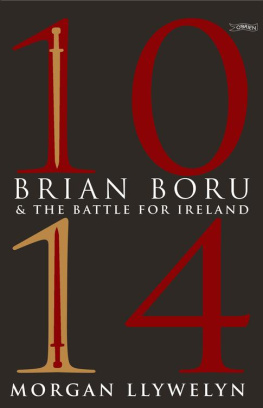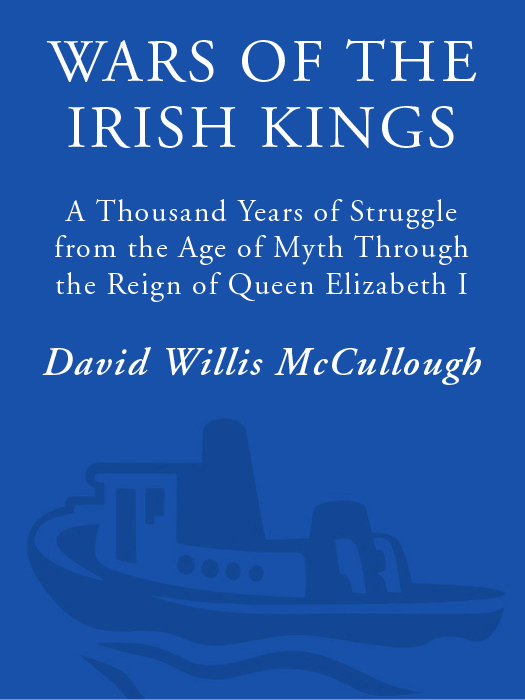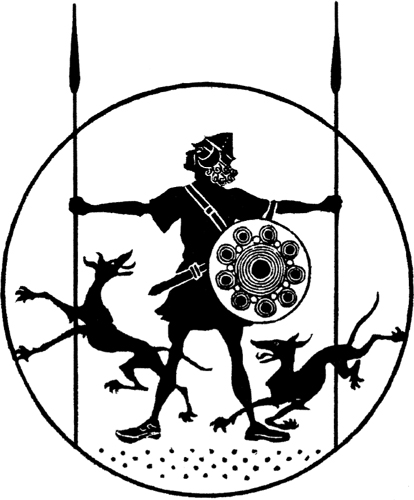Three people played key roles in the creation of this book. In the beginning there was Leslie Pockell, and at the end there were Kathleen Kiernan and Benjamin Hallman. I am also most appreciative of the thoughtful advice of Katharine Simms, professor of medieval history at Trinity College, Dublin, and of Catherine McKenna, professor of medieval studies at the New York University Graduate Program. Their kind generosity, of course, should not be thought to include their imprimatur. Finally there are the libraries. This book could not have existed without them: the New York Public Library, the Hastings-on-Hudson Library, and the Westchester County Library System in the United States, and the National Library of Ireland, the Royal Irish Academy, and the Royal Antiquarian Society, all in Dublin. And before them, there were all those people whose names we dont know or have barely heard, who for one reason or another chose to write down or preserve what they believedor hopedwas the history of their land.
D.W.McC.
CONTENTS
INTRODUCTION: NOTHING BUT TROUBLE
I. MYTHICAL WARS AND WARRIORS
The Frenzy of Sweeney
The Annals of the Four Masters: Ninth- and Tenth-Century Entries
The Freeing of Cellachain, King of Munster
The War of the Gaedhil with the Gaill: An Irish Account
V. THE NORMAN INVASION
Henry II Comes to Ireland by Gerald of Wales
The Book of Howth: The Northern Conquest Begins, 1177
Ireland During the Bruce Invasion From Holinsheds Chronicles of Ireland
The Book of Howth: Battle of Knockdoe
ONeills Victories by Philip OSullivan Beare
The Papers of Sir John Harington: Essex and Elizabeth
A BATTLE BEGINS
The battalions then made a stout, furious, barbarous, smashing onset on each other. But, alas! these were the faces of foes in battle-field, and not the faces of friends at a feast. And each party of them remembered their ancient animosities towards each other, and each party of them attacked the other. And it will be one of the wonders of the day of judgment to relate the description of this tremendous onset. And there arose a wild, impetuous, precipitate, furious, dark, frightful, voracious, merciless, combative, contentious vulture, screaming and fluttering over their heads. And there arose also the satyrs, and the idiots, and the maniacs of the valleys, and the witches, and the goblins, and the ancient birds, and the destroying demons of the air and of the firmament, and the feeble demoniac phantom host; and they were screaming and comparing the valour and combat of both parties.
From The War of the Gaedhil with the Gaill,
twelfth century
INTRODUCTION
NOTHING BUT TROUBLE
L OOKING BACK ACROSS THE thousand or so years between the mythical legends of Irelands origins and the disastrous battle at Kinsale in 1601, it seems downright shortsighted that people pick out a few years in the twentieth century and call them The Troubles. Offhand, it looks as though there was nothing but trouble from the very beginning.
It all beganso were told in Lebor Gabala (The Book of Invasions) during the lifetime of the biblical Abraham, 310 years after Noahs flood. Ireland had been peacefully invaded by a leader named Partholon. The rivers and lakes had been created. The first natural death and burial had taken place, and the first incident of adultery was just about to happen, when Ireland witnessed its first battle. Partholons men took on the Fomoire (who may have been monsters from the sea) on a field near Dublin Bay. The Book of Invasions tells us that the enemy was men with single noble legs and single full hands, that there were three hundred of them, that their leaders mother had four eyes on her back, and that they were cut down in a week. But, unfortunately, the book doesnt tell how an army of one-armed, one-legged men actually fought. It must have involved a good deal of hopping around.
The Partholonians were the first of a series of invaders, each of which brought something to the island (everyones favorite conqueror seems to be the Tuatha De Danann, from the Greek isles, who brought magic and the arts), and each is defeated in turn until the arrival of Miles Hispaniae (his name means the soldier from Spain) and his followers, who are the forebears of the Irish. Or so the story goes.
One of the remarkable things about Ireland is that very early in its history decisions were made in monasteries all over the island to record stories like these about its history and what was thought to be its history. Later, in the twelfth century, these earlier records and memories of the oral tradition of storytelling were used to create books meant to be readand this is both unusual and importantby laymen as well as monks and priests. These early scribe-historians created a literature shaped by political propaganda, family pride, a bit (but not much) of religiosity, and the love of a good story that glorified, romanticized, or simply recorded the past. At the very beginning of Irish history, it would seem, there was already nostalgia for an earlier time. There was a strong sense that current events could be justifiedor explainedby knowledge of past events.
Another wave of historical interest came in the seventeenth century, and in the nineteenth century, amid an awakened sense of nationalism, those ancient documentsstill amazingly preservedwere rediscovered and translated into English.
The earliest tales, although not the first written, were about the mythical conquests that created Ireland. They combined references to events in the Old Testament and Greek mythology with ancient Irish gods and heroes (who seem cut from the same cloth), and actual historical events. Take, for instance, two battles fought during the De Danann conquest on different parts of the plaincalled Moytura (Mag Tured)outside Sligo. The first battle was probably based on a historical event. The second, which we are told took place at the time of the Trojan War, probably was not. Gods stroll around quite casually, and one of themknown for his gluttony and love of porridgeis used for comic relief. There is a hero who cannot be voted king because he lost an arm in battle and kings must be physically intact, but then a magical craftsman makes him a silver arm, which, not surprisingly, turns into a real arm. And that may be a way of explaining through myth how one ancient, maimed chieftain got around the rules of kingship.
Long after the waves of invasions covered in Lebor Gabala, two great figures emerge in early literature: Cuchulain and Finn MacCool. Cuchulain is the hero of Ulster, who has two fathers, the king of Cooley and the god Lug. The entire Ulster Cycle of stories is built around him, the most famous being the


